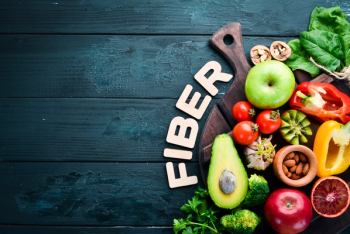
The Art of Sugar Reduction
Growing demand for sugar reduction prompts new ways of formulating.
By Veronica Cueva-Beach, Tate & Lyle
It’s no secret that more consumers are looking to reduce their consumption of added sugars. According to the International Food Information Council Foundation’s annual Food & Health Survey (IFIC), in 2016 61% of Americans claimed they were actively trying to limit or avoid added sugars, an increase of 7% from 2015. In addition, in 2016 43% of consumers said they were specifically trying to limit or avoid sucrose (table sugar), a 14% increase from 2015. Collectively, the growing consumer movement to reduce sugar intake, coupled with FDA’s new, soon-to-be-implemented regulation resulting in the listing of added sugars on the Nutrition Facts label, are accelerating manufacturers’ decisions to change product formulations to reduce sugar, and the data proves it.
Since 2012, product launches with sugar-reduction claims have increased by 172%, according to data provided by market researcher Innova Market Insights in 2016. In the last three years alone, nearly 8,000 food and beverage products launched with some sort of claim around fewer added sugars. Soft drinks, sports nutrition, and dairy are the categories experiencing the most reduced-sugar claims. This is just the beginning of what is anticipated to be a major shift in how brands think about sugar reduction in foods and beverages.
However, reducing and replacing added sugars isn’t that simple. While many manufacturers turn to alternative and high-potency sweetening solutions to maintain taste expectations, they often fail at finding complementary ingredients that address the other sensory experiences a full-sugar product brings to the table: taste, texture, solubility, and more. Formulating with excellence becomes even more complicated across the categories where consumers’ expectations for indulgence and health are non-negotiable.
Baked Goods
Technical expertise in sugar reduction is critical when dealing with baked goods. It is challenging to replace sugar in yeast-fermented baked goods, such as breads and bagels, because sucrose directly affects processing conditions, final flavor, and structure of these products. However, ingredients such as fibers and starches can help manufacturers maintain the sensory experience of full-sugar products.
A high-potency sweetener such as monk fruit is especially effective in helping reduce the sucrose content of sweeter baked goods such as muffins, brownies, cookies, sweet breads, and baked cereal bars-all products that are typically high in sugar. For products like bread that are typically lower in sugar, however, in order to ensure proper taste and structure from the yeast fermentation, only a portion of the sucrose may be removed by substituting in monk fruit.
A recent innovation that has also been used in baked goods to successfully help brands maintain some of the functional attributes of sucrose is allulose.* Allulose, a low-calorie sweetening solution, was formally introduced to the U.S. food and beverage manufacturing market in February 2015. It can impart the similar structure and texture of sucrose, increase the shelf life or humectancy over time, and be combined with high-potency sweeteners to create an ideal sweetness profile.
Beverages
Understanding ingredient synergies is often what leads to a winning beverage formulation. Sweetener synergies enable beverage manufacturers to effectively create low-calorie, low-sugar sweetener blends in beverages with the right sweetness intensity and mouthfeel.
Stevia, for example, provides manufacturers with a natural source for delivering a clean, sweet taste at high sugar-replacement levels. Stevia delivers efficient, high-potency sweetness (200–300 times more potent than sugar) and is stable in processing and storage over a wide pH range, making stevia ideal for use in low-pH systems such as beverages. In cases where high-potency sweeteners like stevia may plateau at higher sweetness levels, a blend of allulose and stevia can help formulators reduce the amount of stevia needed to achieve a higher sweetness level. When combined with allulose, the amount of stevia can be reduced by more than 40% to achieve a 10% sugar equivalence.
Dairy
The tastiest sugar-reduction results most often come from a mix of ingredients expertly combined to deliver desired sweetness and mouthfeel while also reducing sugar and calories. This is especially the case when it comes to reduced-sugar dairy products. Identifying and developing tailored sweetener solutions enables dairy manufacturers to make healthier products that still deliver the taste and texture consumers expect.
The primary challenge of replacing sugar with high-potency sweeteners in dairy products is the loss of solids or bulk. Employing a combination of ingredients like stevia or monk fruit and bulking agents can help make up for this loss. For example, reducing the sugar in ice cream alters the freeze-point depression and total solids of the finished product. Bulking agents and soluble fiber sources can be used to help depress the freezing point and enhance texture.
Selecting the Right SweeteningSolutions
Selecting the right sweetening mix can be challenging. Understanding the functional benefits that sucrose brings to your formulations and taking a holistic approach to reducing added sugars on labels can help manufacturers deliver on consumer demand, without sacrificing consumer acceptance.
Veronica Cueva-Beach is vice president, Global Technology, Specialty Food Ingredients, at Tate & Lyle (Hoffman Estates, IL). *Tate & Lyle supplies Dolcia Prima brand allulose.
Newsletter
From ingredient science to consumer trends, get the intel you need to stay competitive in the nutrition space—subscribe now to Nutritional Outlook.





